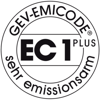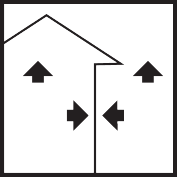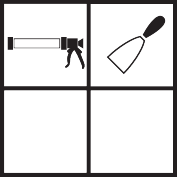Article No. 750512
Elastic sealant based on MS hybrid polymers

Product specifications
On delivery
Once fully cured
Once fully cured
100% (DIN EN ISO 8339) 0.4 N/mm²
(DIN EN ISO 7389) > 70%
(DIN EN ISO 10563) < 5%
(DIN EN 15651-1) +/- 25%
The stated values represent typical product characteristics and are not to be construed as binding product specifications.
Field of application
- Joints in concrete and prefab constructions
- Facade joints, joints in masonry
- Facade cladding, steel and assembly work
- Connection joints between door and window frames and the building structure
- Universal, elastic polymer adhesive
Properties
- Good adhesion on many substrates
- Quick, blister-free hardening
- Can be coated/painted over
- Compatible with paints in accordance with DIN 52452-A1
- Very low emissions (GEV-EMICODE EC 1Plus)
- Free from isocyanates
-
Preparation
-
Substrate requirements
The sides of the joints must be load-bearing, dry, clean and free of grease, metals must be bare.
-
Preparations
In construction work the joint dimensions required by DIN 18540 must be observed.
Joints that are too deep should be filled with round cords.
If necessary and depending on the substrate, use Primer PUR as an adhesive primer.
Observe flash-off times.
-
-
Application
-
Cut off tip at an angle according to the width of the joint and inject, filling the joint completely.
Apply the material with sufficient pressure to the sides of the joint, then smoothen with a moist spatula.
-
Application instructions
-
Take appropriate measures to protect adjacent building elements and materials that should not come into contact with the product.
Skin formation and hardening depend on storage and change as the product ages.
Hardening times increase at increasing joint depths.
Do not apply to bitumen, tar, polymers containing plasticisers, natural stone.
Not suitable for sealing glass, in sanitary areas, for floors or for underwater joints.
Paints, varnishes and coatings must be compatible with the sealant.
Inadequate crosslinking of the sealant and delayed drying of the coating cannot be ruled out upon direct contact with coatings.
-
Drying
Skin formation: approx. 25 minutes (+23 °C/50% RH)
Full hardening: approx. 2 mm/day (+23 °C/50% RH)
-
-
Working tools / cleaning
-
Manual and compressed air gun, scraper, adhesive tape
The compound can be removed in the fresh state with V 101 Thinner; after it has cross-linked, it can only be removed by mechanical means, after swelling with V 101 if necessary.
-
Storage / shelf life
-
If stored unopened in its original container in a cool, dry place and protected against frost, the product will keep for at least 15 months.
-
Usage
-
Approx. 100 ml/running metre for a 1 cm² joint cross-section
-
General information
-
Always set up a trial area/trial areas first.
When applied to copper, slight discolouration may occur.
Under some conditions, discolouration (yellowing) may occur if the material comes into contact with coating systems on an alkyd resin and/or polyurethane base.
Current regulations and legal requirements must be taken into account and deviations from these must be agreed separately.
The relevant test certificates must be observed when planning and carrying out work.
-
-
Disposal instructions
-
Larger quantities of leftover product should be disposed of in the original containers in accordance with the applicable regulations. Completely empty, clean containers should be recycled. Do not dispose of together with household waste. Do not allow to enter the sewage system. Do not empty into drains.
-
-
Safety / regulations
-
For further information on the safety aspects of transporting, storing and handling the product and on disposal and environmental matters, please see the current Safety Data Sheet.
-











